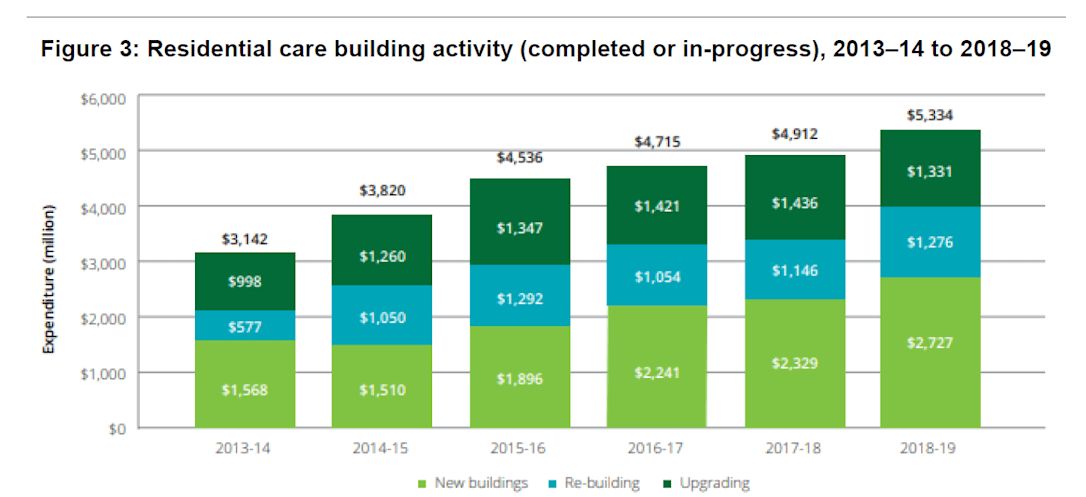The Royal Commission last week released its Capital Financing for Residential Aged Care Report, identifying that in 2018/19 $5.3 billion was invested all up in residential aged care homes.
New homes account for $2.27B, rebuilding $1.27B and upgrading $1.3B (total $5.3B).
This is along the lines of the forecast $55 million required across 2020 – 2030 to keep pace with the ageing population.
But the report questions whether the current capital arrangements with government are appropriate. For instance RADs, with government guaranteed backing, now total $30.2 billion compared to the $5.3 billion spent a year. It says:
“The use of Refundable Accommodation Deposit by providers is limited under the Aged Care Act. Permitted uses include for capital expenditure, investment in financial products and making or repaying loans”.
The challenge is, how do you unwind $30B? Nobody will want to repay it in the short-term.
But the report also points out that operators are not under any scrutiny as to how effectively funds will be used. It also notes that information supplied by providers is inadequate, particularly around disclosure and liquidity standards.
Finally, they are concerned about falling occupancy placing pressure on the viability of some providers.
The report says some providers may have difficulty accessing bank loans for capital financing purposes, and the Aged Care Financing Authority is reporting feedback from the banking sector which suggest that there are a significant number of aged care providers, particularly small providers, who are considered to be an unacceptable credit risk.
Adding to this concern is the amount of equity value operators had in their bricks and mortar. Not-for-profit operators average 34.7% while private operators averaged only 12.1%.
In one of the report’s concluding points, it asks “how the capital financing arrangements might need to change to support progressive shift in the balance of care from residential to home care”?
In summary, the government appears to have got itself into a capital funding situation it does not like but will not be able to shake, unless customers do it for them by simply not joining in aged care homes.
We hear reports that over the next 2 to 3 years the level of development/redevelopment will be a fraction of what it was last year, thanks to COVID and funding uncertainty. There is little room for the government to move.










